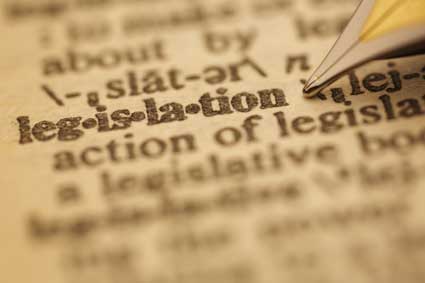Introduction
In today's technological world, communication takes on a much different scope than it did even 10 years ago. There are devices that enable everything from verbal communication (cell phones) and written communication (emails, faxes, instant messages), to nonverbal communication (webcams) to happen almost instantaneously. With so much technology inundating people around the globe, communication has never been easier – or more fraught with potential problems.
Objectives
In this article, you will learn more about the technology currently available to make communication faster and easier. You will also learn what kinds of repercussions this access to instant communication has on business and personal relationships.
ü What technologies are used around the globe today?
ü What are the benefits of communications technology?
ü How can communications technology have a negative impact?
Modern Technologies
Although there is no single, universal method of communicating through technology, computers and the Internet are among the most popular today. As a communications tool, computers allow users to send almost instantaneous messages, maintain a lengthy correspondence, or even network with individuals from all over the globe.
Almost all computer users are familiar with using the Internet to send and receive emails. Further communication through instant messages and forums is also available to those who are willing to use the technology. However, there are additional options for a computer-savvy and less-than-computer-savvy user to consider.
Computer-Based Technologies
Social Networks: The most widely-known social networks currently in existence include MySpace and Facebook. These websites create a "virtual community" wherein users create a page that describes their interests, history, and background information. Users send messages, offer links to other websites, and even promote their own interests by using the virtual "space" offered by the network itself.
Weblogs: Also simply known as "blogs," these are websites that are built and maintained by independent companies and individuals. Those who run the weblogs publish their thoughts, writings, pictures, and even videos on the website. Other viewers are then typically free to make comments on that weblog or publish their own blogs or blog articles in response.
Internet Forums: These typically contain "threads" of conversation that can be read by almost anyone on the Internet (although most forums require some sort of account before you can actually participate in the conversation). Oftentimes, someone poses a question or addresses a controversial topic, which users then respond to.
Email: Email is one of the most popular forms of written communication, rapidly replacing traditional letters and postcards as a means of keeping in touch. Users create online accounts that enable them to send messages, receive messages, and even store messages.
Instant Messaging (IM): This is a type of "phone call" that takes place with words. Users type in a message or note, which is then sent immediately to the desired recipient. Files and other documents can also be sent through IM.
Webcameras (Webcams): Webcams are typically placed on top of a computer monitor (many are also built into laptops and some higher-end monitors). They function like a video camera, but the images can be recorded and sent online. These can be used to offer up-to-the-minute footage.
Traditional Communication Means
Faxes: Traditionally for business use, these send images on paper from one location to another, using Internet connections or a phone line. They are often relied upon for sending important documents, like contracts, or anything else that requires a hard signature.
Telephones: Telephones have been in use for over 100 years. These tried-and-true communication portals have certainly evolved over the years, but today's technology makes worldwide calling cheaper and easier than ever.
"Snail" Mail: This nickname for letters, postcards, and documents sent through the Postal Service is still relied upon for many communication needs. When a document must be tracked, or a hard copy obtained, this remains one of the most reliable sources of communication. It is also the only choice for communication in some remote parts of the globe.
Portable Communication Devices
Cellular Phones: Cell phones are becoming increasingly smaller and more complex. They offer the convenience of telephones with a wireless portability that makes them usable almost anywhere. They range from basic phones with limited range to more complex personal communication devices with music playing capabilities (MP3), Internet access, and even keyboards for typing. The higher-end devices (such as the Blackberry) are considered "wireless hand-held devices" rather than cell phones, even though they feature calling as part of the package.
Text Messaging: Most cell phones produced today offer text messaging capabilities. Popular among teens and many other youthful users, these allow written messages to be sent through hand-held devices in the same fashion as a phone call would be made.
Benefits of Communications Technology
Ease of Communication
When you communicate using a cell phone or other transportable telecommunications device, you aren't restricted in where and when you can communicate (with the exception of poor cell phone reception). You no longer have to be at home or near a pay phone to make a call, and you can even send written messages through cell phone devices in the form of text messages, or even emails.
By breaking down these location barriers, communication becomes faster and easier than ever. For businesses, this means that proposals can be approved even during out-of-office hours (or relationships can be forged cross-country with no need for face-to-face meetings). For individuals, this means distance is no longer a boundary that will result in strained relationships.
Reduced Waste
Part of the appeal of technological communications is the tendency to stray from traditional formats of written communication, like faxes, letters, and even books. By using text messages, email, and personal reading devices, users can reduce the amount of paper they use and waste on a daily basis.
Drawbacks of Communications Technology
Isolation
It is much easier to live and work in social isolation thanks to communications technology. While there are benefits to not being required to make a personal connection for each and every social transaction, too much isolation can be detrimental to business and personal relationships. For example, it is easier than ever to send a quick email to check on the status of a loved one. However, as we have discussed in other sections, there is a lack of emotional connection through this kind of written communication. Too much of this isolation can put a strain on relationships, and even contribute to poor mental health.
Boundaries
As communication becomes quicker and easier, it is more difficult to separate one's home life and one's business life. In the past, the only way to conduct major business deals, or to attend to the details of the workplace, was by being physically present or setting face-to-face meetings. Since email can be checked from almost any location, and cell phones make communication easier, many individuals find their work hours encroaching on their home lives – regardless of whether the action is voluntary or not.
Misunderstandings
Introduction
There are a number of reasons why a message might not get across properly. Perhaps the speaker is not being clear enough, or the listener is not really paying attention. Maybe there are cultural or technological issues at play.
Regardless of the culprit, when information isn't correctly transmitted from the speaker to the listener, there is no effective communication happening and everyone's time is wasted. In addition, misunderstandings or miscommunications can cause a number of problems in both interpersonal and business relationships.
Objectives
The goal of this section is to learn to recognize where there might be breakdowns in communication. By knowing what problems you are facing, you are more prepared to avoid them altogether. Being an effective communicator means knowing how to get your message across, and how to discover what others are trying to say.
ü What are the possible physical obstacles to communication?
ü How can personality conflicts affect communication?
ü What is the primary down-side of technology?
ü How can I put my knowledge to work?
Physical Impairments to Communication
While modern life has made great advances for the integration of those with disabilities, these folks do still face many challenges in daily life. Physical impediments can definitely interfere with a person's ability to communicate, whether that means having trouble getting an idea across, or struggling to hear or understand a response.
One such impediment is a speech disorder. In fact, these are sometimes referred to as "communication disorders." Someone with a speech disorder may lisp or stutter. Others may not have the ability to speak at all. Likewise, a hearing individual and a deaf individual may experience some difficulties in communicating effectively.
While much of the responsibility for dealing with these situations falls to the person with the impairment, the other people in the conversation need to do their part to ensure that effective communication is happening. This may involve simply asking the other individual if any accommodations would be helpful. It also involves being respectful when asking for clarification on things that may not have been understood.
For example, an individual with cerebral palsy might have no problem following the conversation and formulating intelligent responses. There may be difficulty, however, in articulating those ideas. The others in the conversation should remain patient and respectful and avoid being patronizing or brusque.
Outside Impediments Affecting Communication
Not every environment is conducive to effective communication. There are a number of environmental factors that can greatly reduce how well communication happens. Those working on a construction site, for example, will have to deal with excessive noise, while trying to give or receive instructions on how to get the job done. Staff located in separate buildings will have fewer opportunities for face-to-face communication than they would if they worked in closer proximity.
For those giving presentations, even the room you're in can affect the outcome. In some cases a podium can give you a nice platform from which to speak. At other times, it might be too much of a barrier between you and your audience. If the room is too large, people in the back may have trouble hearing what you have to say. Rows of chairs and architectural elements in the room can block the view from the audience to the stage, as well.
The body language you use can also create barriers between you and the people with whom you are trying to communicate. Being aware of what kind of signals you're sending can help you avoid confusing or annoying the listener. You are able to control your body language to some degree, so make sure that you are coming across as being open and interested in others.
Personality Conflicts and Communication
Trying to communicate with someone, when you don't get along, can be extremely frustrating. When there is antagonism between two or more people, the ability to effectively communicate diminishes drastically. These situations can result in a variety of negative outcomes.
- Frustration – When people rub each other the wrong way, every little thing can become irritating and frustrating. Obviously, we do not do our best work when we are distracted by the things that are bothering us. The same is true for our ability to communicate effectively.
- Fear – It is not impossible for the person on one side of a personality conflict to intimidate the other. The person with the more aggressive personality is liable to discount the other's input, while the more passive person may be too fearful to contradict the other, even when he or she should.
- Poor Cooperation – People who do not get along are less likely to be able to work together in teams. When they are forced to do so, cooperation will be low, and the ability to communicate will severely suffer.
However, there are methods that can help offset some of these negative outcomes. When two people within a conflict must work together, it can be helpful to add a third party into the mix – especially if this third party has some seniority. The others are less likely to act out on their dislike in this arrangement. Also keep in mind that face-to-face speech isn't the only method of communication today. If the parties have a better chance of remaining civil over email, give them the opportunity to communicate that way.
The Downside of Technology
Now that we have digital media as a way to bolster better communication among people, it is necessary to take a look at some of the problems that can be caused by relying too heavily on technology.
One of the most obvious problems in relying on technology is that it can fail. Cellular phone batteries go dead. Internet connections get interrupted. Fax machines break. Entire hard drives crash. These are all very real impediments to effective communication. If you absolutely need to discuss a business idea with a potential investor, and you forgot to charge your phone battery, you are not going to look very professional.
Remember that there are a variety of aspects of communication that have nothing to do with actually speaking. Being unprepared for an important conversation or presentation says something about you, without you even uttering a word.
Another problem with some technology is that people forget that they have very little privacy, when it comes to things like the Internet. If you get mad and write a hasty email, all the other person has to do is forward it to everyone in his or her address book, and everyone can see how unprofessional you have been.
It is also easy to overlook the fact that the Internet is not as anonymous as we might think. When you write something online, there is always a possibility of it being traced back to you and hurting you. Blogging about your job, for instance, may break the rules of a nondisclosure agreement you signed when you started working. Many employers these days will do an Internet search using prospective employee's names and will take anything they find (articles, comments, social media profiles) into consideration when hiring.
Finally, communication can suffer when we use technology like text messaging and email, simply because those media do not convey the nuance of what we are trying to communicate. The content message is what you say, and the relationship message is how you say it. When you send someone an email, your recipients are usually only able to determine the content message. Even if it seems completely obvious to you that you are being sarcastic, this may not come through to the reader. Misinterpretations are a very serious problem when we rely on electronic forms of communication.
Putting It into Action
Just by recognizing some of the more common pitfalls to effective communication, you have a head start in avoiding them. If you have a physical impairment, or realize that you will be communicating with someone who does, you can prepare ahead of time to make sure you are going to be as effective as possible. Likewise, you may be able to determine why there are breakdowns in your place of work when you realize that the physical layout of the space doesn't foster effective communication.

































